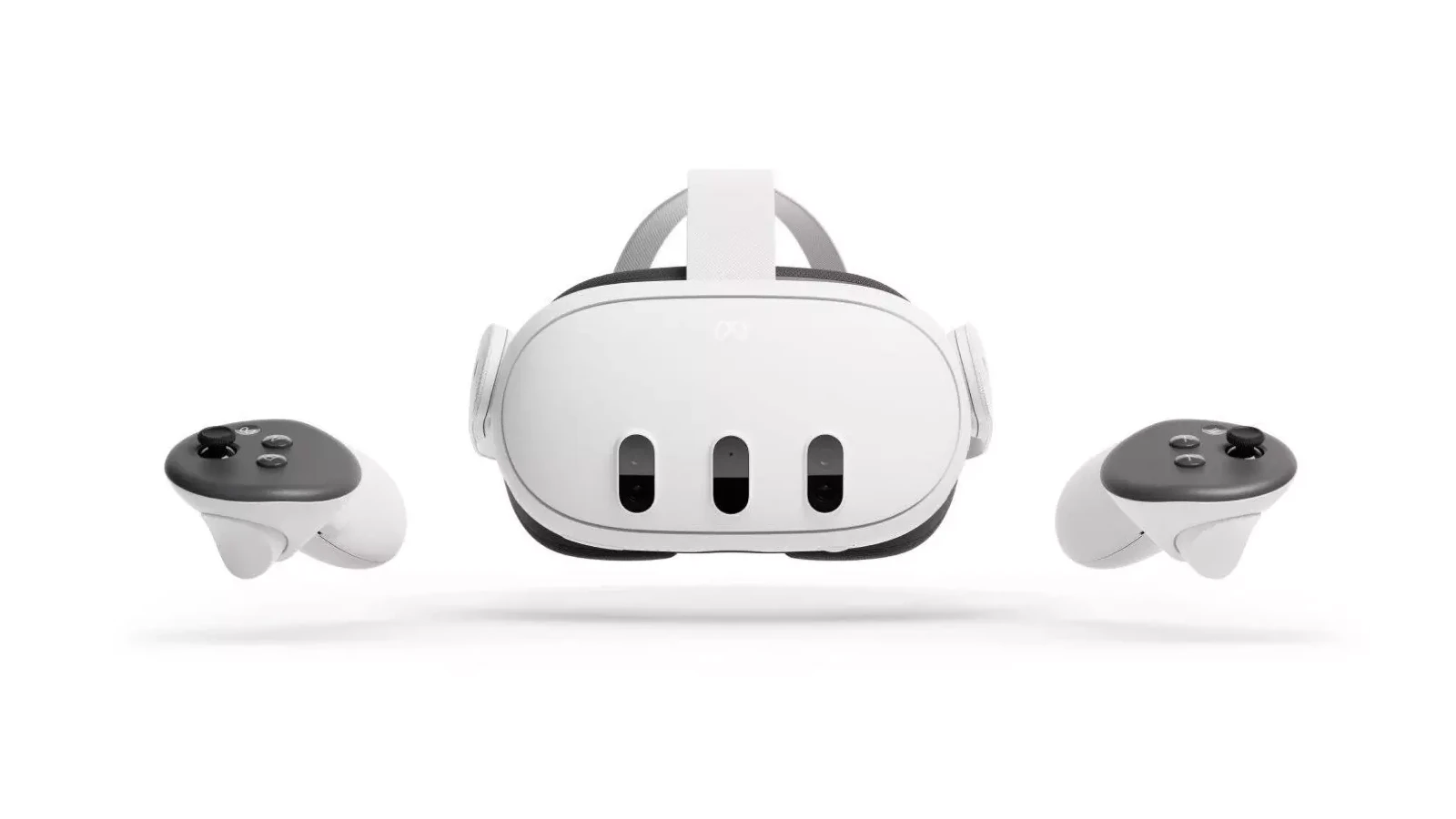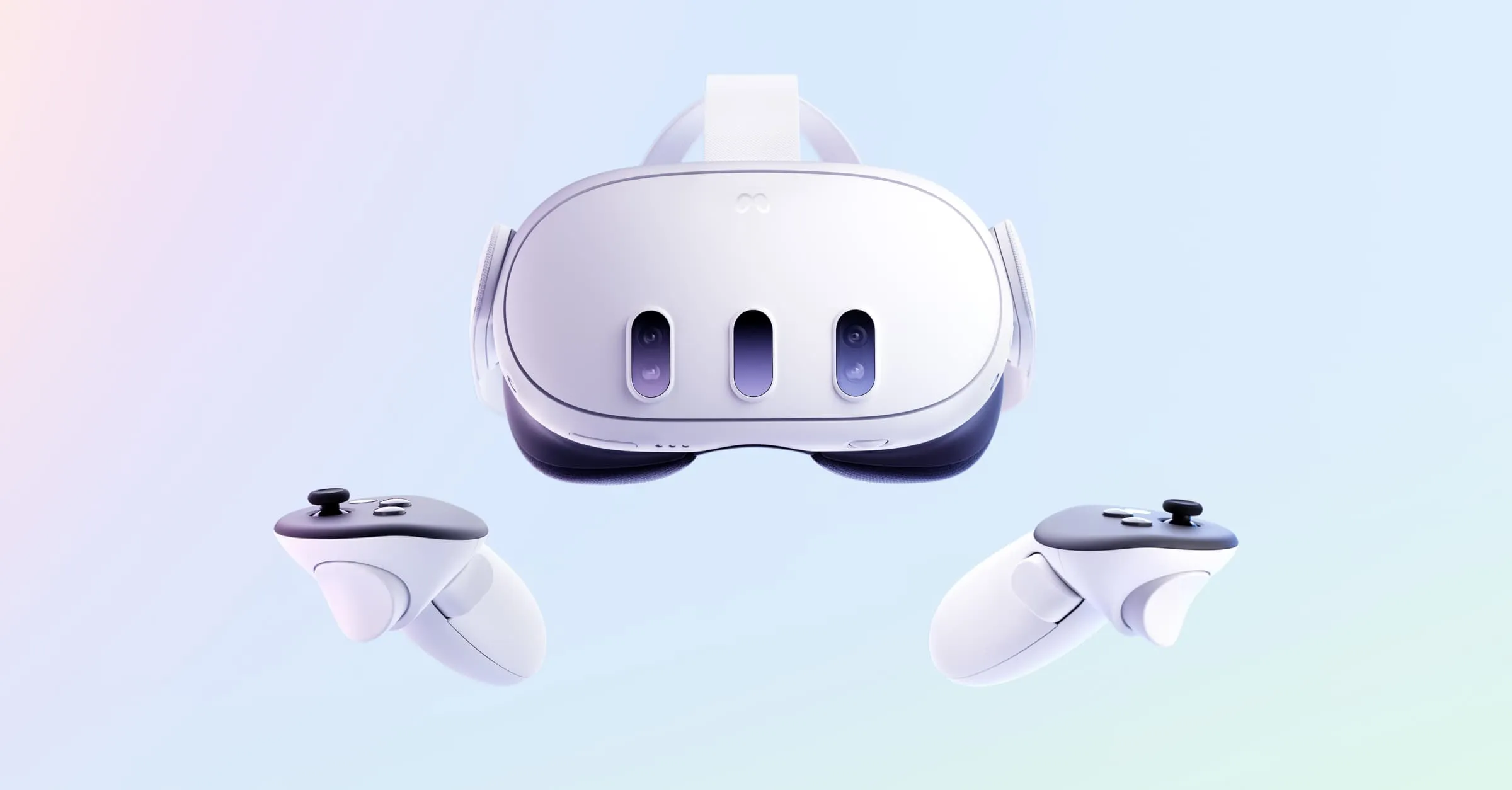A major shift is underway in the virtual reality landscape, and Meta’s latest flagship headset is feeling the pressure. According to Steam’s June 2025 Hardware & Software Survey, the Meta Quest 3 has dropped a staggering 6.38% in usage, falling from its previous spot as a rising star in the VR space. It now sits at 16.28%, losing ground to older headsets and rising challengers alike.
In an ecosystem that changes fast, this kind of monthly drop signals more than just a dip in popularity—it suggests that the VR audience is reevaluating what it wants from a headset.
What’s Behind the Drop?

The Meta Quest 3 launched with high expectations and a strong feature set: a sleek design, mixed reality capabilities, and powerful mobile hardware. But the recent decline hints at a more complicated reality. Several factors may be contributing to the headset’s sudden slide:
- Steep pricing compared to older models: With many gamers still satisfied with their Quest 2—which just grew to 31.38% market share on Steam—the need to upgrade isn’t urgent. The Quest 2 remains the most-used VR headset on the platform by a wide margin.
- PC VR compatibility issues: While the Quest 3 can be used as a PC VR headset via Air Link or Link Cable, some users have reported inconsistent performance and stability compared to older Oculus devices or dedicated PC VR gear like the Valve Index.
- Lack of killer exclusives: Despite improved hardware, Meta hasn’t delivered enough platform-exclusive games that truly push the Quest 3’s capabilities and justify the leap from older models. Many of the best PC VR games still play just fine on older hardware.

Valve Index and Others Gain Ground
As the Quest 3 stumbles, other headsets are quietly picking up steam. The Valve Index now holds 16.05%, nearly neck-and-neck with Meta’s newer model. The Oculus Rift S and original Quest 2 are also seeing slight increases, with many users seemingly opting to stick with tried-and-true setups.
Interestingly, Pico 4—a headset from ByteDance (TikTok’s parent company)—has grown to 4.13%, suggesting that competition in the VR space is heating up globally, especially as Asian markets embrace alternative platforms.
SteamVR Still a Niche, But Active
Despite the jostling within the VR category, overall VR headset usage among Steam users remains relatively stable at 1.41%, down slightly by 0.19%. That number may seem small, but it represents a highly engaged segment of the gaming community. These users are more likely to buy new titles, test emerging tech, and push the boundaries of what’s possible with immersive gaming.
Meta’s investment in mixed reality and productivity use cases with the Quest 3 may also mean that many owners aren’t showing up in Steam’s data simply because they aren’t using their headsets for PC gaming. If that trend continues, we could see Meta gradually shift away from the hardcore SteamVR audience in favor of standalone and enterprise use cases.
What’s Next for Meta?
The Quest 3’s slide doesn’t necessarily spell doom—it’s still one of the most popular headsets on the platform. But to regain momentum, Meta will need to:
- Improve PC VR performance and compatibility across Steam titles
- Launch compelling exclusives or partnerships that draw gamers back in
- Possibly revise pricing strategies or offer more aggressive bundles
With Apple Vision Pro and other high-end entrants targeting premium mixed reality, Meta now finds itself squeezed between ultra-budget gear and futuristic hardware. The Quest 3 must prove it can still lead in both performance and accessibility.
For now, though, the Steam charts have spoken—and they suggest the headset’s crown may be slipping.
Latest About The Oculus Quest 2
The Meta Quest 2 VR headset has seen a significant price drop recently, making it more accessible than ever for virtual reality enthusiasts. Meta has permanently reduced the price of the 128GB Quest 2 model to just $199 USD, down from its previous price point. This price reduction marks a strategic move by Meta to bring more users into the VR space without requiring additional equipment like TVs, consoles, or wires.
For those looking to enter the world of virtual reality without breaking the bank, this pricing update represents a notable opportunity. The Quest 2 offers an all-in-one VR experience that doesn’t require external hardware to operate. However, it’s worth noting that Meta has also launched newer models like the Quest 3S starting at $299.99, which comes with added benefits like a Batman game and a Meta Quest+ trial subscription.
The Meta Quest 2 is still actively receiving updates and support, though Meta is transitioning its focus to newer headsets like the Quest 3 and Quest 3S. Here’s a summary of the latest information:
Key Developments & Updates:
- Software Updates: Meta continues to push out software updates (e.g., v78, v79 PTC) to the Quest lineup, including the Quest 2. These updates often include bug fixes, performance improvements, and new features, though some users report issues and instabilities with recent versions. Recent updates have introduced features like:
- Transparent Navigator variants.
- Testing of flat capture for 2D apps.
- Ability for WebXR apps to use payments.
- New window layout for multiple apps.
- Creator content in Horizon Feed.
- Swipe typing.
- Panoramic photo and spatial video uploads from iPhones.
- Passthrough improvements.
- Mouse and keyboard improvements.
- Travel mode (for Quest 2 and Quest 3).
- Discontinuation of Sales: Meta has discontinued the sale of the Quest 2 and Quest Pro. They will no longer be available once stock runs out or by the end of 2024, whichever comes first. This is to simplify their lineup, focusing on the Quest 3S (starting at $300) and the 512GB Quest 3 ($500).
- Continued Support: Despite the discontinuation of sales, Meta has stated that the Quest 2 will continue to receive:
- Feature updates: Until December 2026, ensuring continued access to Horizon OS features and social experiences.
- Critical bug and security updates: Until December 2027.
- Meta Store Support: Remains available as usual throughout this time.
- Developer Focus Shift: While many existing games still support the Quest 2, developers are increasingly creating games optimized for the more powerful Quest 3, meaning new, more graphically intensive titles may not be compatible with the Quest 2.
- Community Feedback: Users are actively discussing recent updates on platforms like Reddit, with some reporting positive changes and new features, while others voice concerns about performance regressions, UI glitches, and features being removed or greyed out.
In essence, the Quest 2 remains a viable VR headset with ongoing software support for the next few years, but Meta’s long-term strategy is clearly geared towards its newer, more advanced models.
Key Takeaways
- The Meta Quest 2 (128GB) is now permanently priced at $199 USD, making it an affordable entry point to VR.
- Meta has introduced newer models like the Quest 3S at $299.99 that include bonus content and improved features.
- The all-in-one design of Quest headsets eliminates the need for additional hardware like consoles or external computers.
Pricing Trends and Factors
The Quest 2 VR headset has experienced significant price fluctuations since its launch. These changes reflect Meta’s strategy adjustments and market positioning as newer headsets have entered the scene.
Retail Pricing and Availability
The Quest 2 headset has seen several official price changes from Meta. Initially, the company raised the price by $100 in mid-lifecycle, bringing the cost to $400 for the base model. This unusual move was attributed to increasing production and shipping costs at the time.
More recently, Meta has permanently reduced the Quest 2’s price to $199, making it their budget VR option. This strategic price drop positions the Quest 2 as an entry-level alternative to the newer Quest 3 and Quest 3S models.
The headset remains widely available at major retailers including Amazon, Walmart, and Target. However, inventory levels may vary as Meta focuses production on newer models.
Promotions and Discounts
Meta frequently offers seasonal promotions for the Quest 2 through the Meta Quest Store. These typically include bundled games or accessories at no additional cost.
Third-party retailers often provide their own discounts. Amazon and Walmart occasionally drop prices below Meta’s official MSRP during major shopping events like Black Friday and Prime Day.
For budget-conscious buyers, the second-hand market presents another option. Pre-owned Quest 2 headsets typically sell for $100-150 depending on condition and included accessories.
When comparing prices, buyers should consider the diminishing value proposition. Industry experts suggest that spending more than $100 above the base price ($199) might make newer Meta headsets a better value.
Technical Specifications and Advancements
The Meta Quest 2 offers significant technical improvements over its predecessor while maintaining an accessible price point. These advancements create a more immersive VR experience through enhanced display technology, processing power, and overall design refinements.
Comparative Analysis: Quest 2 vs. Quest 3
The Quest 2 features a resolution of 1832 × 1920 pixels per eye, a substantial upgrade from the original Quest’s 1440 × 1600 pixels. This provides sharper visuals and reduced “screen door effect” that was noticeable in earlier VR headsets.
While the newer Quest 3 has since superseded it, the Quest 2 remains relevant due to its price reduction to $199.99 for the 128GB model and $299.99 for the 256GB version. This represents excellent value compared to the Quest 3’s higher price point.
The Quest 2 utilizes the Qualcomm Snapdragon XR2 processor paired with increased RAM, delivering better performance for games and applications. Its lighter weight design (about 10% lighter than the original) also improves comfort during extended use sessions.
Immersive Features and Performance
The Quest 2 supports a 90Hz refresh rate, enhancing the smoothness of motion in virtual environments. This higher refresh rate helps reduce motion sickness issues that some users experience with VR.
Key immersive features include:
- Inside-out tracking without external sensors
- Improved hand tracking technology
- Enhanced audio system with spatial sound
- Guardian boundary system for safe play spaces
Battery life typically ranges from 2-3 hours of active use, depending on the applications being used. The headset can be used while charging for extended sessions.
The Quest 2’s field of view remains comparable to the original at roughly 90 degrees, providing an immersive experience while maintaining processing efficiency.
Compatibility and Gaming Experience
The Quest 2 functions as both a standalone headset and can connect to gaming PCs via Oculus Link cable or Air Link wireless connection. This flexibility allows users to access both Quest-native content and PC VR titles.
The device supports a growing library of over 250 games and applications designed specifically for the Quest platform. Popular titles include Beat Saber, Resident Evil 4 VR, and Population: One.
For enhanced comfort during active games, Meta offers the Active Pack accessory with grippable controllers and wrist straps. The headset is also compatible with various third-party accessories.
While lacking the full-color passthrough capabilities of the Quest 3, the Quest 2’s monochrome passthrough allows users to view their surroundings without removing the headset. This feature is particularly useful for quick real-world interactions during VR sessions.
Frequently Asked Questions
The Oculus Quest 2 has undergone several price changes since its launch. Consumers have many questions about its current status, availability, and how it compares to newer models.
What is the current retail price for the Oculus Quest 2 in the United States?
The Oculus Quest 2 (128GB model) is now priced at $199 in the United States. This represents a significant reduction from its previous price points.
The 256GB model is available at a higher price point, though specific pricing may vary by retailer.
Has there been a recent price drop for the Oculus Quest 2?
Yes, Meta has permanently dropped the price of the Quest 2. The 128GB model is now available for $199, down from its previous price.
This price reduction appears to be part of Meta’s strategy as newer headsets enter the market.
The company announced this permanent price drop to make VR more accessible to new users.
Is the Oculus Quest 2 still available for purchase or is it being phased out?
According to the search results, Meta Quest 2 is no longer available directly from Meta. The company appears to be phasing it out in favor of newer models.
Meta is now directing customers to the Meta Quest 3S, which starts at $299.99 USD.
Some retailers may still have remaining Quest 2 inventory available for purchase while supplies last.
What are the latest developments regarding the release of the Meta Quest 3?
Meta has already released the Quest 3 and is now promoting the Quest 3S as well. The Quest 3S starts at $299.99 USD.
The Quest 3S offers mixed reality experiences on what Meta describes as an “unreal device.”
This new headset represents Meta’s continued push into more advanced VR and mixed reality technologies.
Where can I find the best deals for the Oculus Quest 2 online?
With the permanent price drop to $199 for the 128GB model, official retailers that still have stock would offer this new lower price.
Online marketplaces and electronics retailers may offer additional discounts or bundles with accessories.
Used Quest 2 units may also be available at lower prices as users upgrade to newer models.
How does the price of Meta Quest 2 compare to its predecessor models?
The Quest 2 at its current $199 price point is significantly more affordable than the original Quest was at launch.
When first introduced, the Quest 2 was actually priced lower than the original Quest, starting at $299 rather than $399.
Interestingly, Meta did raise the price of the Quest 2 in August 2022 by $100 before eventually dropping it to the current $199 level.







